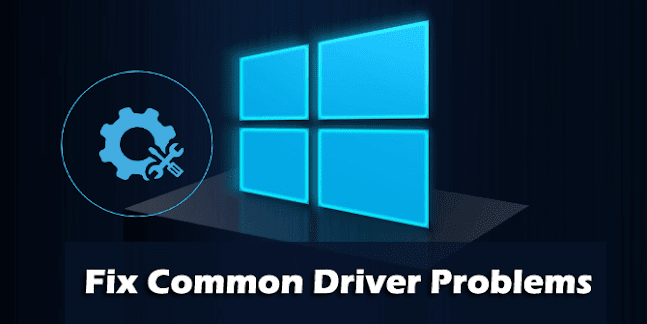How to Fix Common Driver Problems in Windows?

Driver problems are common on Windows operating system especially when you upgrade to a newer OS version. There can be several reasons behind a driver conflict however the major reason is always the compatibility issues. If you are not tech-savvy, you may face challenges with driver issues and may not be able to fix driver problems.
There are a few inbuilt utilities in Windows operating system that can help you fix driver problems. If these tools are of no help, you can make use of the best driver updater. These automated applications can take of such glitches on their own and you just need to give the command. Let’s explore the manual methods first and then check out the best driver updater for PC.
What is the role of device drivers?
Device drivers are computer programs that act as mediators or as an interface between the hardware or software components and the operating system of the PC.
So, they are like interpreters instructing the hardware peripherals or the software applications to carry out a specific function and produce a required output as per certain specific commands given by a program.
Thus, the driver program is operating system specific and hardware dependent.
It has been observed by users as well as experts that whenever the system drivers experience any problem such as they go missing after an update, become corrupted or faulty after sometime, or simply become out-of-date due to lack of timely updates, then the hardware peripherals or even certain software stops functioning smoothly or normally.
Thus, keeping the device drivers in absolutely updated state is indispensable for a wonderful user experience. Otherwise, you need to be prepared to deal with a lot of glitches and errors manifesting over a period while you work on your Windows computer.
Install Windows Update
Microsoft Windows Updates utility automatically installs the latest released updates, bug fixes, patches and added features on a routine basis. You should keep the Windows Update utility enabled to automatically keep your device updated and install the latest drivers.
1. Press (Win + I) to open the settings window. You can also click on the Start button and click on the Gear Icon for the settings window.
2. Scroll down and click on the Update & Security option.
3. Click on the Check for Updates button and let Windows find and install the latest device drivers and updates for your computer. If there are critical updates installed, it will ask you to restart the computer.
Install Device Drivers using Device Manager
The Device Manager is a one-stop solution for all driver-related issues. You can check, update, or uninstall the device drivers using the device manager.
1. Press (Win + R) to open the Run command window.
2. Type devmgmt.msc and hit the Enter key.
3. Scroll through and select the device that needs to be updated. Look for a yellow exclamation sign on the faulty device.
4. Right-click on the device and click on the Update Driver option.
5. If you have installed Windows Updates, you can select the ‘Search automatically for drivers’ option. If you have downloaded the device driver, you can select the ‘Browse my computer for Drivers’ option and follow the wizard to finish the installation. Restart the computer once done and check if you have fixed the driver problem.
Use the Best Driver Updater for PC
The manual methods may or may not fix the driver problem however the automated methods can automatically take care of the issue. We have tested, compared, reviewed dozens of driver updater software for Windows and listed the best driver updater for PC.
Advanced Driver Updater is one of the best driver updater software that is compatible with Windows 11, 10, 8.1, 8, 7, and earlier versions with (both 32-bit and 64-bit) OS. It is an easy-to-use application that automatically updates its driver database and fixes driver problems. Its smart algorithm has a pool of drivers that are not even recognized by Microsoft or downloaded by Windows Library.
You can install device drivers of corrupt, formatted, or crashed storage devices like monitors, Display adapters, Network cards, Disk drives, Processors, Video Cards, Audio Cards, Scanners, Printers, Wi-Fi, Bluetooth, Network Adapters, Optical Disk, USB Ports and others.

Post a Comment
Please do not enter any SPAM link in comment box.